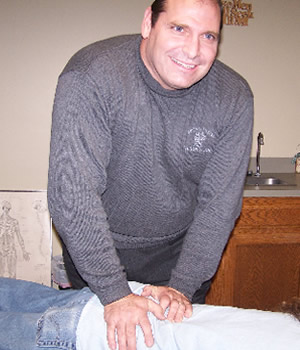More information:
How Are Chiropractors Trained?
 Although a two year pre-chiropractic education emphasizing the basic sciences is required, many chiropractors attain a bachelors degree before entering a chiropractic college. The core curriculum chiropractors receive includes over 4,400 hours (a five year academic course) of classes in anatomy, physiology, pathology, diagnosis, laboratory, nutrition and many hours of training in physical medicine including a 550-hour internship curriculum program--very similar to a medical school curriculum. Although a two year pre-chiropractic education emphasizing the basic sciences is required, many chiropractors attain a bachelors degree before entering a chiropractic college. The core curriculum chiropractors receive includes over 4,400 hours (a five year academic course) of classes in anatomy, physiology, pathology, diagnosis, laboratory, nutrition and many hours of training in physical medicine including a 550-hour internship curriculum program--very similar to a medical school curriculum.
How Long Will it Take?
That depends on several factors. Your age, physical condition, previous history of accidents or surgeries, occupational requirements and how well you adhere to our treatment program. Relief of pain usually happens quickly (within a month), though stabilizing your condition may take longer. This will be discussed with you before you start treatment, based on your personal needs.
Anything Else I Should Know About?
Yes. Our primary concern in our practice is the well-being of our patient. We go to great lengths to make our patients feel comfortable and cared for with dignity, respect and the highest ethical standards. If at any time you feel otherwise once you become a patient, please let us know. We are here to serve you in every way possible.
How Do I Know if I'm a Chiropractic Patient?
First, we'll start with a comprehensive history including everything from your past medical history, lifestyle habits, job requirements, etc. to uncover hidden sources of stress in your life. This is followed by a very thorough physical examination to determine the cause of your problems. X-rays may be ordered on occasion if you have a history of previous trauma or chronic complaints.
The following are common conditions of patients who come to us:
- Low back, hip and/or leg pain or numbness
- Neck, shoulder and arm pain, tingling or numbness
- Chronic headaches
- Knee and/or ankle pain or injury
- All types of sports, dance and work injuries
- Carpal Tunnel symptoms
- Pain between shoulder blades
- Difficulty sitting, bending and lifting
- Problems sleeping due to neck or back pain
- Unsuccessful neck or back surgery resulting in recurrent symptoms
- Progressive weakness in an arm or leg
- Recurring joint pain, stiffness or swelling
- Auto accident injury
- Inability to walk for reasonable distances without back or leg pain
- General malaise or weakness
- Inability to perform daily activities
If your problem is not on this list it does not mean chiropractic cannot help you. There are many conditions that may be helped by chiropractic not listed. Please contact
us for more information.
|

